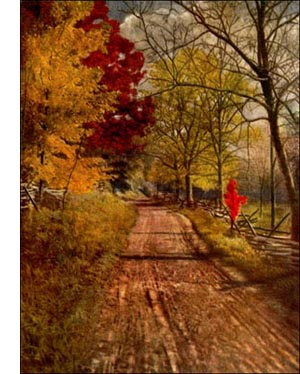Ohio Buckeye or Fetid Buckeye Tree
 Ohio Buckeye, Fetid Buckeye (Aesculus glabra, Willd.) -Tree 20 to 70 feet high, with small, spreading top; odour fetid; twigs brown, pubescent, becoming smooth. Bark grey, broken into plates. Wood white, shading into brown sap wood, light, soft, and difficult to split.
Ohio Buckeye, Fetid Buckeye (Aesculus glabra, Willd.) -Tree 20 to 70 feet high, with small, spreading top; odour fetid; twigs brown, pubescent, becoming smooth. Bark grey, broken into plates. Wood white, shading into brown sap wood, light, soft, and difficult to split. Winter buds pointed, 2/3 inch long, not resinous; scales elongating to 2 1/2 inches in spring, becoming light coloured. Leaves opposite, yellow-green, of 5 (rarely 7) obovate, smooth leaflets. Flowers April and May, in terminal clusters, small, pale, yellow-green.
Fruit, October, 1 to 1 1/2 inches in diameter, globular, 3-valved, very prickly when green, becoming less so when ripe; nut brown, with pale spot on side. Preferred habitat, moist woods along river banks.
Distribution, Alleghany Mountains from Pennsylvania to Alabama; west to Michigan and Oklahoma. Uses: Wood used for artificial limbs and small wares.
This tree was found most abundantly in Ohio by the botanical explorer, Michaux, and though it grows more plentifully farther west, Ohio will always be called "the Buckeye State." The tree is gradually becoming rarer, for the strong, disagreeable odour exhaled by its bark impels people to cut it down. There is nothing about the tree to offset this disadvantage.
Its flowers are inferior to those of other species. Only the special use to which its wood is put-the making of artificial limbs-seems to justify this ill-favoured tree in the eyes of practical people. Its vigorous nuts are too bitter to be eaten, and thus it seems to be well fitted to hold its own in the woods.